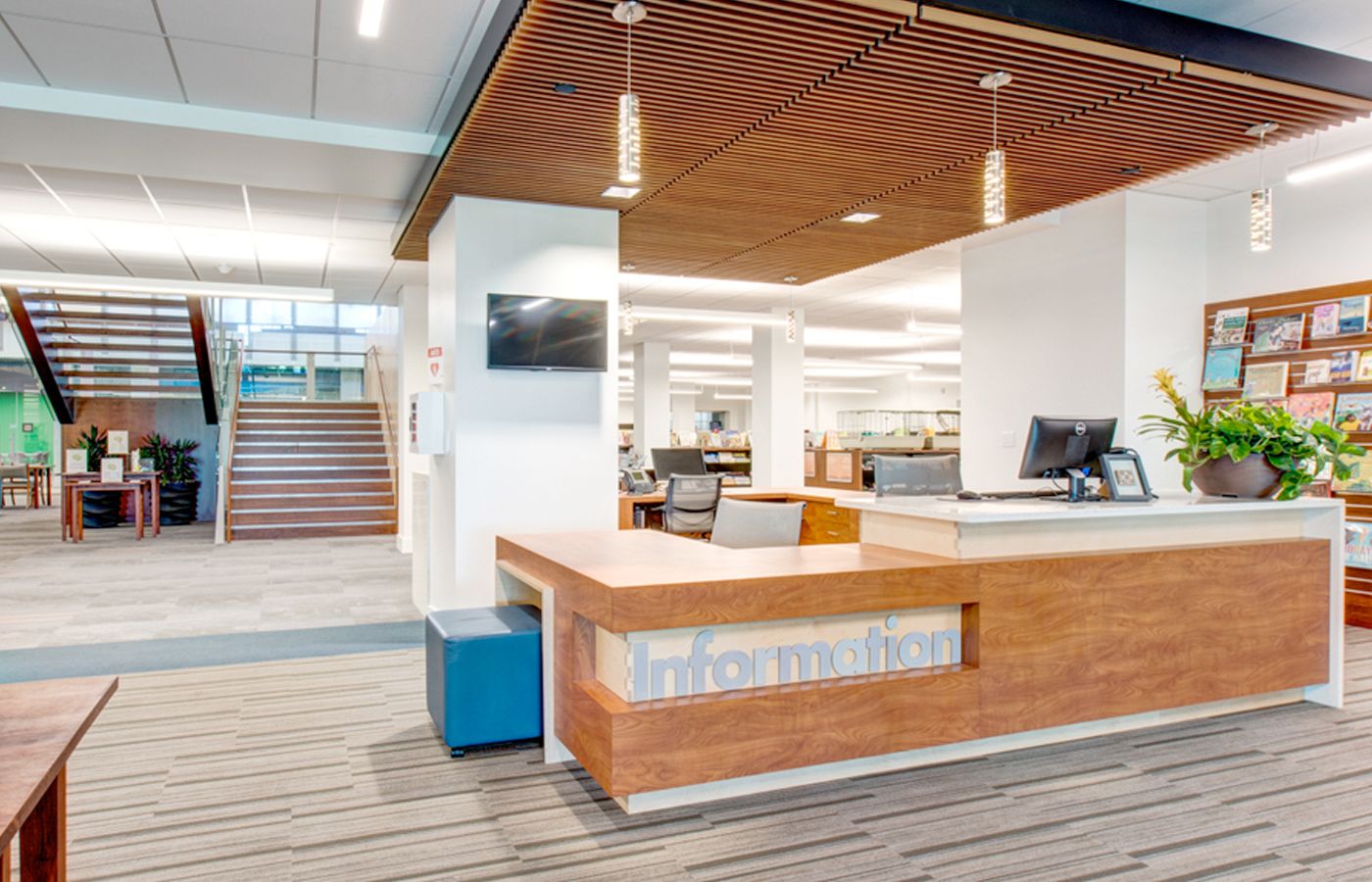Academic Library Trends
How academic libraries’ changing role is influencing design.
In an era when technology is dominating the conversation in higher education, it’s easy to assume that campus libraries could become irrelevant. But as we’re seeing, the opposite is true; academic libraries are alive and well – perhaps even more popular than in the past – but for new and ever-evolving reasons.
From individual study space and group project meeting rooms to technology, software, and space for unique learning environments, the physical library space has been shaped by new student expectations. While helping students navigate information is still central to academic libraries’ missions, that practice now involves less physical books and more digital reference materials, software, and hands-on learning. Though these changes are sometimes unpopular among faculty who wish to keep physical collections on hand, there’s no doubt that academic library design will continue to include fewer long rows of shelves and more spaces intended to inspire new ways of learning.
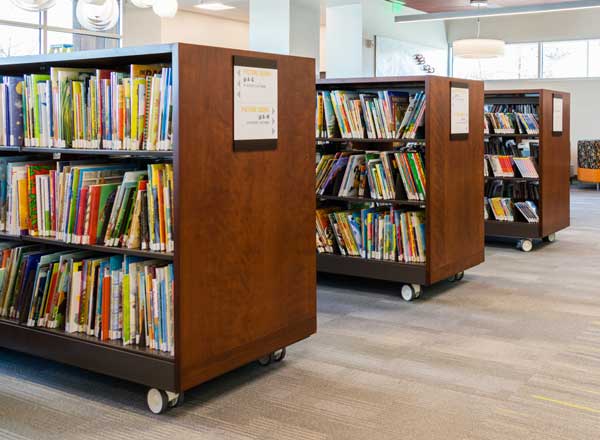
Flexibility is Paramount
With so much discussion around “the transformation of libraries” and the rapid pace of change on campuses, it only makes sense that academic libraries are looking for flexibility in their space, furniture, and equipment. A flexible space not only helps prepare for unknown future needs, but also allows students and staff to rearrange based on events, activities, and personal study preferences.
On a small scale, this can look like adding casters to all your shelving to make it mobile, allowing you to rearrange the space as needed.

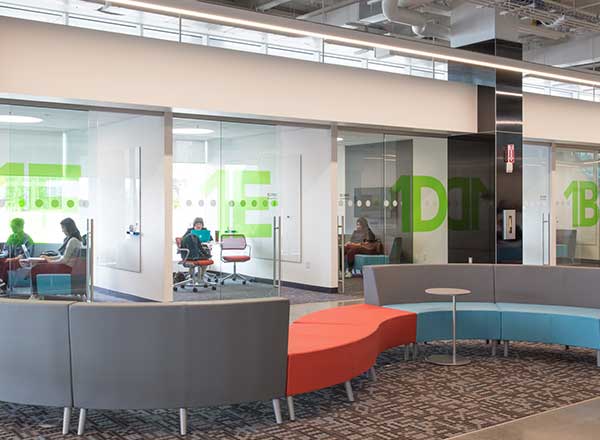
On a larger scale, this could look like incorporating large multipurpose spaces, like a Learning Commons that can be used for events, private study, or conversation. These spaces can be even more effective if they offer temporary dividers, such as moveable walls that slide on floor rails to create custom-sized meeting rooms on the fly.

Collections on the move
To make room for all these new library functions like tutoring, media, meeting space, cafes, and even active learning classrooms, something has to go – and that something is usually books. Most libraries opt to pare back on items that don’t circulate often, reduce duplicate copies, and offer digital versions whenever possible. Some books are moved to other libraries on campus, but many are moved to off-site storage facilities, which may even be shared with other nearby institutions.
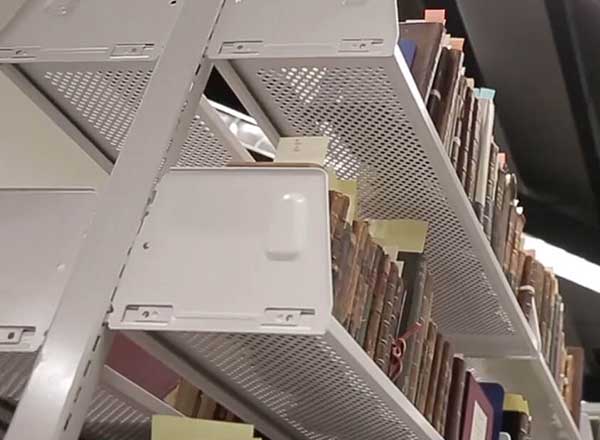
One thing that’s not changing: Special Collections
For all the evolution that academic libraries are experiencing, one thing that hasn’t changed is the importance of special collections. Many university and college libraries pride themselves on the historic books, documents, and even 3D objects that they care for, whether they stay in the library or get moved to an off-site facility. These collections are usually one-of-a-kind and therefore offer unique opportunities for exhibits, research, curricular involvement, and even fundraising efforts.

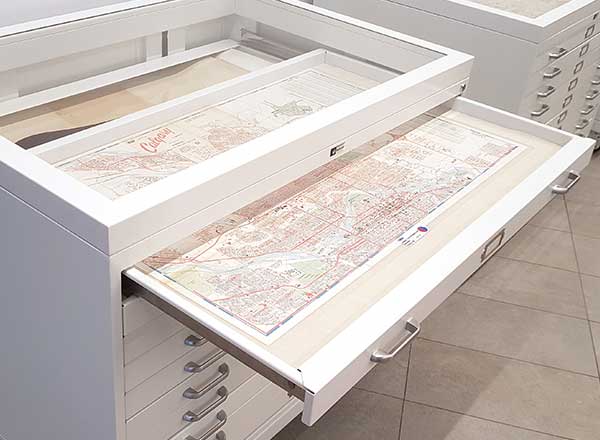
These collections often require special conditions when it comes to ventilation, temperature, humidity, and even security. Rather than typical library shelving, it’s best to think of these special collections as you would museum collections. Using museum-grade cabinets for larger objects, maps, and architectural drawings can help keep them secure and protected from day-to-day damage and large-scale disasters like flooding or fire.
Next Up in Libraries
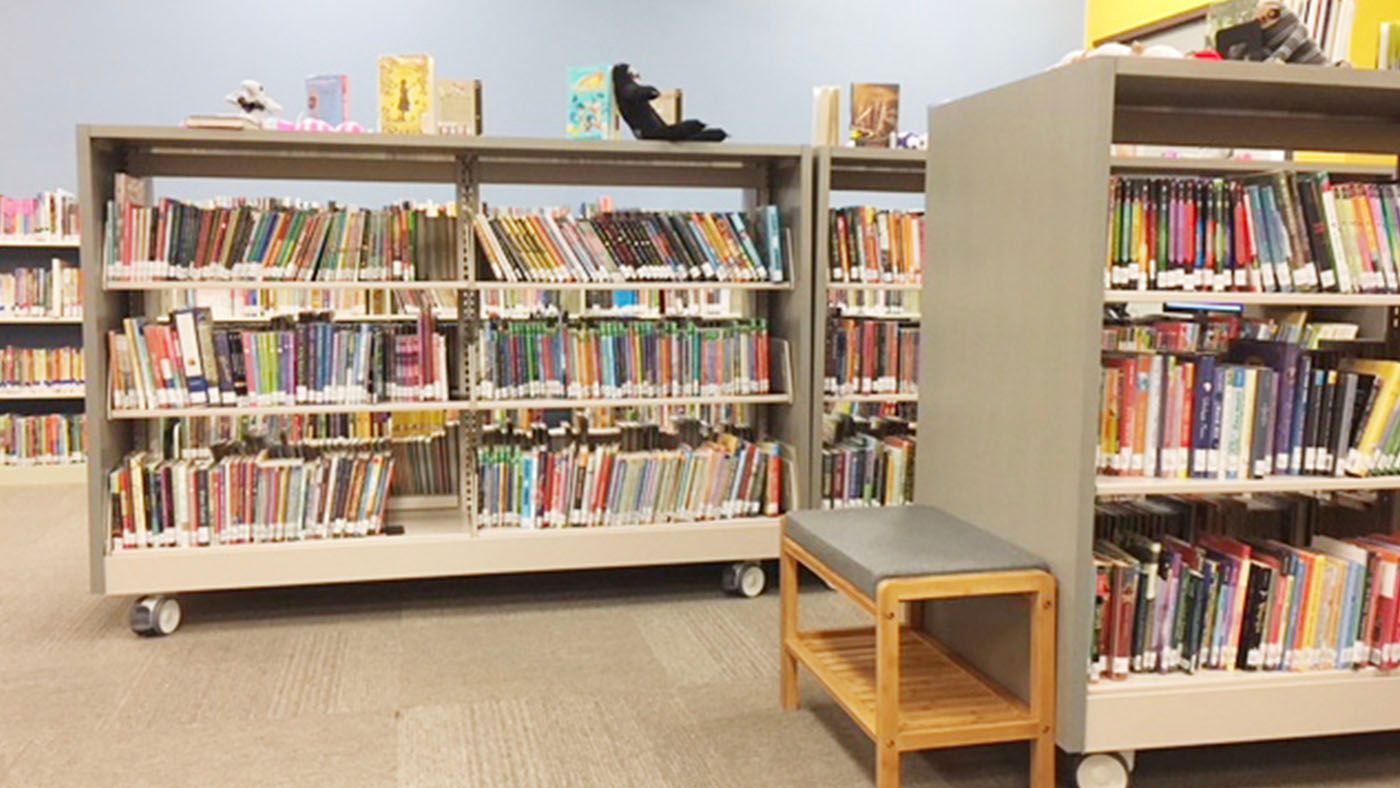
Enhance Library Efficiency and Flexibility with Adjustable and Configurable Shelving
Read On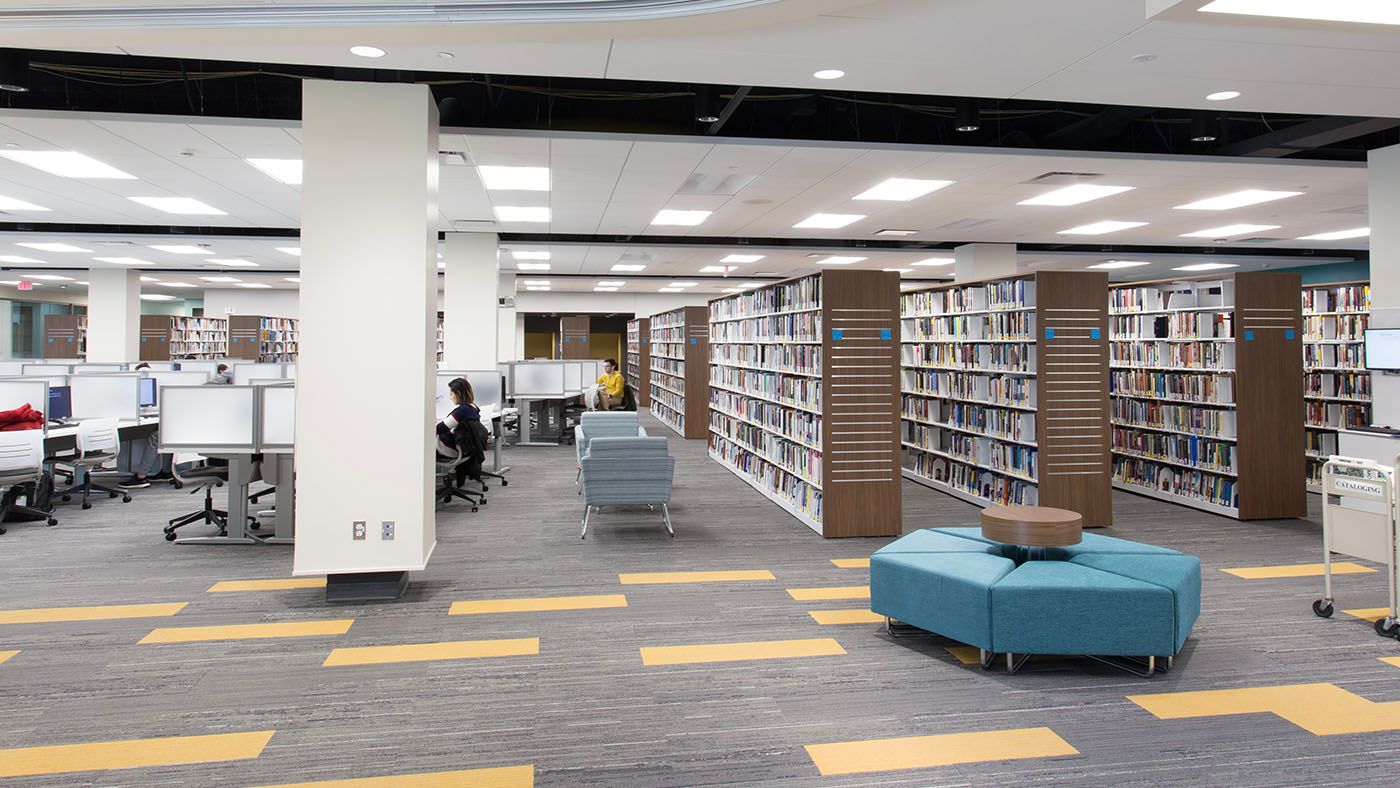
Spacesaver provides insights and installs geared toward advancing your campus library’s impact.
Read On